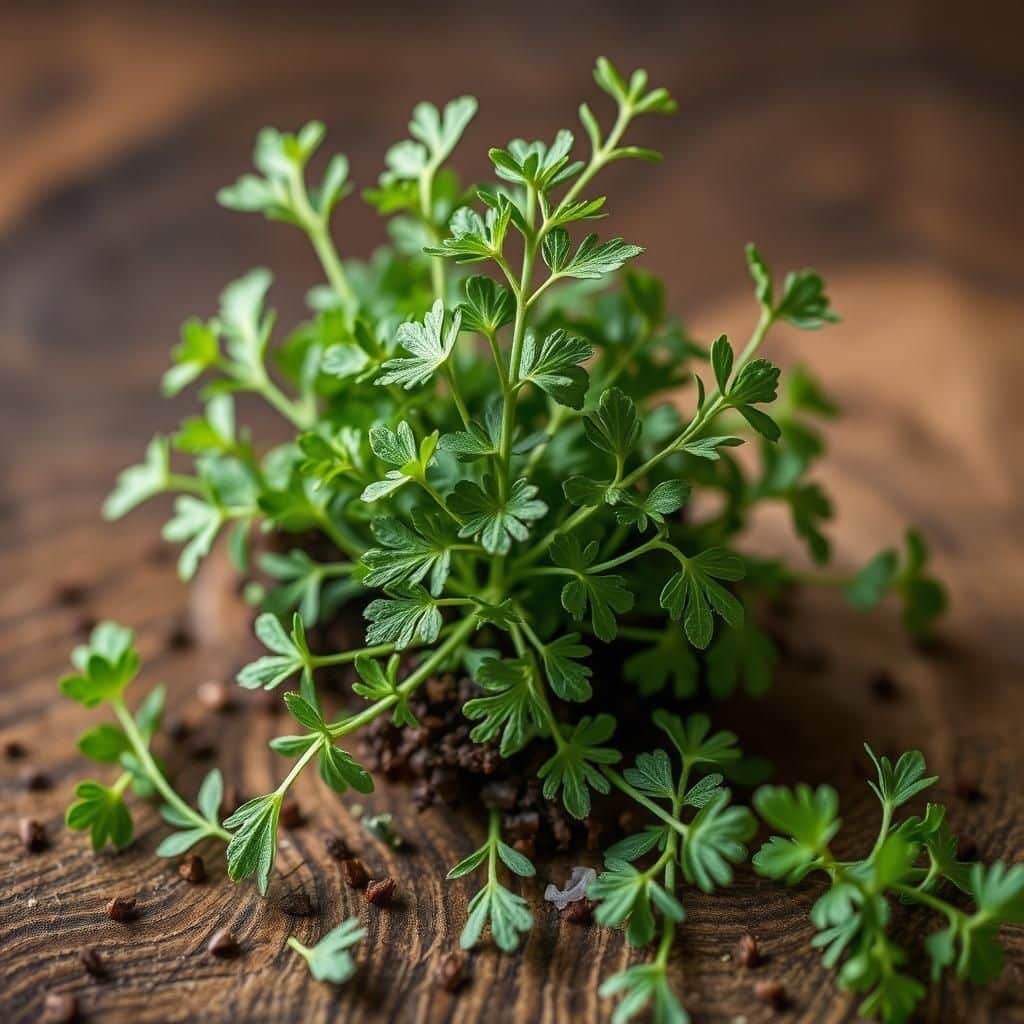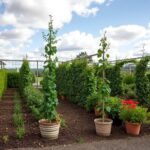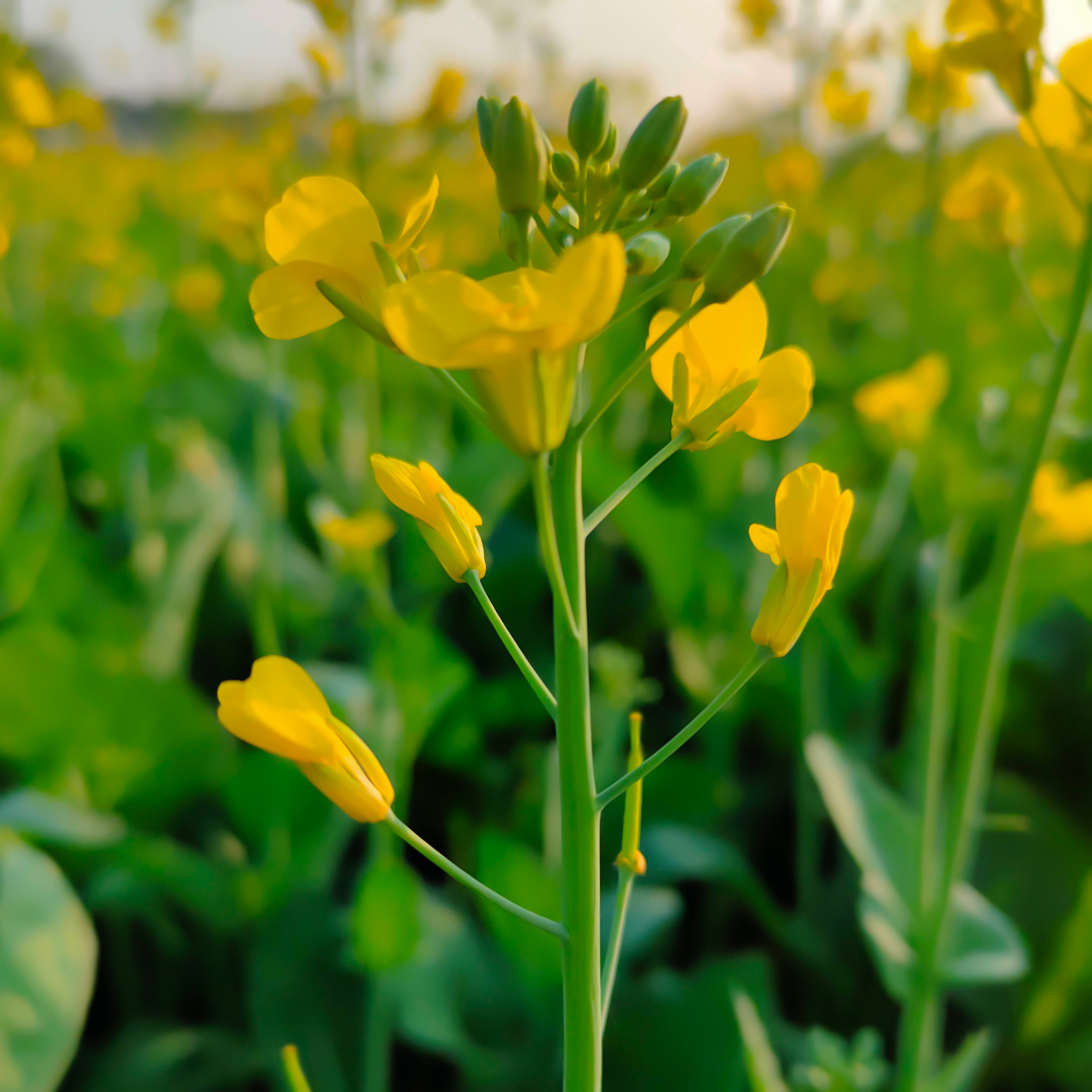Is Coriander a Herb or a Shrub? Discover the Truth Behind This Culinary Plant

Coriander, also known as cilantro, is a culinary staple that has sparked debate among chefs and gardeners alike: is it a herb or a shrub? This intriguing plant, with its distinctive flavor and aroma, plays a vital role in various cuisines around the world. Understanding its classification not only enhances our appreciation of coriander but also informs our gardening practices and cooking methods. In this article, we will explore the characteristics of coriander, its growth habits, and delve into the definitions of herbs and shrubs to uncover the truth behind this versatile culinary plant.
Understanding Coriander: Herb or Shrub?
Coriander, scientifically known as Coriandrum sativum, is classified primarily as a herb due to its tender leaves and aromatic qualities which are commonly used in culinary applications. Unlike shrubs, which are typically woody plants with multiple stems, coriander is an annual plant that possesses soft, green foliage. The leaves of coriander are widely recognized and valued in various cuisines for their fresh flavor, while its seeds, known as cilantro seeds, are used as a spice. Although coriander can grow to a height of about 3 feet, its soft texture and growth habit associate it more closely with herbs than with shrubs, making it predominantly categorized under the herbaceous plant group.
Definition of Herbs
Herbs are typically defined as non-woody plants that are valued for their culinary, medicinal, or aromatic properties. They usually have a soft, green structure and can be used in various forms, such as fresh leaves, dried leaves, or extracts. In the culinary world, herbs are often used to enhance the flavor of dishes, and their versatility makes them a staple in many kitchens worldwide. Unlike shrubs, herbs do not develop a rigid stem, contributing to their classification as soft-stemmed plants.
Characteristics of Coriander
Coriander is characterized by its distinctive leaves, which have a unique flavor often described as citrusy and slightly peppery. The plant can produce both leaves and seeds, with the leaves known as cilantro and the seeds being an essential spice. Coriander leaves are typically used fresh, while the dried seeds are ground to produce coriander powder. Moreover, the entire plant can be cultivated in a variety of climates, thriving best in sunny locations and well-drained soil.
Comparison: Herb vs. Shrub
The primary difference between an herb and a shrub lies in their structural characteristics. Herbs, such as coriander, are generally soft-stemmed and are often used for culinary or medicinal purposes, while shrubs are woody plants that usually have multiple stems and can grow much larger. Shrubs are more permanent fixtures in a landscape, often used for decorative purposes, whereas herbs are typically annual or biennial and are cultivated for their short-term harvests.
Culinary Uses of Coriander
Coriander is highly regarded in many culinary traditions around the world. In Mexican cuisine, fresh cilantro leaves are used in salsas and guacamole, while the seeds are essential in preparing curries in Indian cuisine. Additionally, in Middle Eastern cooking, coriander adds depth to various dishes, including soups and stews. The versatility of coriander allows it to be utilized in both whole and ground forms, enhancing a wide range of dishes with its distinctive flavor.
Growing Coriander
Growing coriander is relatively easy and can be done indoors or outdoors. This plant prefers full sun and well-drained soil, and it can be sown directly into the ground or grown in pots. Coriander can be cultivated in a relatively short amount of time, typically maturing in 3 to 4 weeks after planting. Regular harvesting of the leaves encourages further growth, while the seeds can be collected once they mature and dry on the plant.
| Aspect | Herb | Shrub |
|---|---|---|
| Structure | Soft-stemmed | Woody stems |
| Growth Habit | Annual/Biennial | Perennial |
| Culinary Use | Flavoring | Decorative |
| Height | Typically under 3 ft | Varied, often taller |
| Harvesting | Frequent throughout season | Less frequent |
Is Basil a herb or a shrub?


Basil is classified as a herb, specifically belonging to the family Lamiaceae. It is a soft-stemmed plant that is often used in cooking for its aromatic leaves. Unlike shrubs, which tend to be woody and can grow larger in size, basil is typically a small plant, making it a staple in herb gardens and culinary applications.
Basil's Botanical Classification
Basil is a member of the genus Ocimum, which includes several species, the most common being Ocimum basilicum, known as sweet basil. Botanically, herbs are defined as plants with non-woody stems and are often utilized for culinary or medicinal purposes. Here are some key points regarding its classification:
- Basil falls under the family Lamiaceae.
- It features a soft stem that makes it distinct from shrubs.
- Its use in kitchens around the world highlights its culinary significance.
Ideal Growing Conditions for Basil
Basil thrives in warm climates, preferring full sun and well-drained soil. Understanding the requirements for growing basil is essential for gardeners. Key factors include:
- Soil must be rich in organic matter.
- The plant requires about 6-8 hours of sunlight daily.
- Regular watering is crucial but should avoid over-saturation.
Culinary Uses of Basil
Basil is widely celebrated in various cuisines, particularly Mediterranean and Italian dishes. Its aromatic leaves add a distinctive flavor to many recipes. Here are some common uses:
- Add fresh leaves to pasta dishes for enhanced flavor.
- Integrate basil in pestos and sauces.
- Use basil as a garnish on salads and soups.
Medicinal Properties of Basil
Basil is noted for its potential medicinal benefits, making it not only a culinary delight but also a valuable herb in traditional medicine. Its properties include:
- Antimicrobial and anti-inflammatory effects.
- Rich in antioxidants which may support health.
- Often used in teas and extracts for potential stress relief.
Varieties of Basil
There are numerous varieties of basil, each with unique characteristics and uses. Some popular types include:
- Sweet basil, often used in Italian cooking.
- Thai basil, which has a spicier flavor suitable for Asian dishes.
- Purple basil, known for its ornamental value as well as culinary uses.
Is mustard a herb or a shrub?

Mustard is classified primarily as a herb. The term mustard can refer to various species within the Brassica genus, such as Brassica alba (white mustard), Brassica nigra (black mustard), and Brassica juncea (brown mustard). These plants are typically characterized by their leafy green growth and flowering habits.
See also:
Characteristics of Mustard Plants
Mustard plants exhibit several distinct features that classify them as herbs:
- Growth Habit: Mustard plants are generally annual or biennial herbs, characterized by their tender herbaceous stems.
- Leaf Structure: They typically have broad, lobed leaves that grow in a rosette pattern.
- Flowering: Mustard plants produce bright yellow flowers, which grow in clusters and attract various pollinators.
Difference Between Herbs and Shrubs
Understanding the differences between herbs and shrubs is crucial in botany:
- Life Cycle: Herbs are usually short-lived plants that complete their life cycle in one or two growing seasons, unlike shrubs, which are perennial and can live for several years.
- Structure: Shrubs have woody stems and often exhibit branching from the base, while herbs remain non-woody.
- Height: Herbs are generally smaller in stature compared to shrubs, which can grow significantly taller.
Culinary Uses of Mustard
Mustard is widely recognized for its culinary applications, which enhance various dishes:
- Condiment: It is commonly used as a condiment in sandwiches, burgers, and salads.
- Flavoring Agent: Ground mustard seeds can be used as a spice to flavor sauces, marinades, and dressings.
- Health Benefits: Mustard contains nutrients and antioxidants, contributing to a balanced diet when used in moderation.
Mustard Varieties
There are several varieties of mustard, each with unique characteristics:
- Yellow Mustard: Known for its mild flavor, often used in hot dogs and burgers.
- Brown Mustard: Has a spicier flavor profile and is commonly used in European cuisine.
- Chinese Mustard: This variety is used in Asian dishes and is known for its pungent taste.
Mustard Cultivation
Cultivating mustard is relatively simple and can be done successfully in various environments:
- Soil Requirements: Mustard thrives in well-drained, fertile soils with good moisture retention.
- Sowing Time: It is typically sown in early spring or late summer, depending on the climate.
- Pests and Diseases: Mustard plants can face challenges from pests like aphids and diseases such as downy mildew, requiring appropriate management.
Questions from Our Readers
Is coriander a herb or a shrub?
Coriander is classified as a herb rather than a shrub. It is an annual plant known for its leaves and seeds, which are commonly used in cooking and culinary applications.
What part of the coriander plant is used as a herb?
The leaves and stems of the coriander plant are used as a herb, while the seeds are referred to as coriander seeds, which have a different flavor profile and culinary use.
Can coriander grow into a shrub?
Coriander does not grow into a shrub; it typically grows as a low, bushy annual herb that reaches about 1 to 2 feet in height before completing its life cycle.
See also:
What is the culinary use of coriander as an herb?
Coriander leaves are widely used in various cuisines to add a fresh, citrusy flavor, often found in dishes like salsas, salads, and Asian dishes, enhancing the overall taste profile.

If you want to read more articles like Is Coriander a Herb or a Shrub? Discover the Truth Behind This Culinary Plant, we recommend you check out our Gardeners category.
Leave a Reply
Related Articles